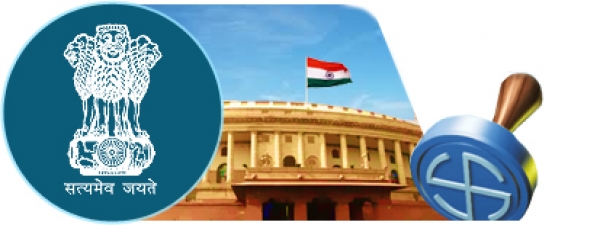How the government and businesses can possibly share the burden of COVID-19
The country can only get this financial crisis in control and dodge the economic devastation if all of the four stakeholders including the employer, employee or
- by aditi verma 2020-04-14 05:53:21
With the whole country under lockdown due to the coronavirus pandemic, as a result, while the businesses and livelihoods had to face severe constraints and hardships. In a request made to the citizenry, the government of India has asked the businesses not to temporarily terminate the services of employees during this time of a worldwide pandemic. Most of the Small and Medium Enterprises can comply with this request for about a month, but you cannot expect them to sustain the ‘unemployed employment’ beyond that point. As it is not just unfair but also impossible in practical terms.
The country can only get this financial crisis in control and dodge the economic devastation if all of the four stakeholders including the employer, employee or contract worker, the government and the vendor, stand together and make sacrifices while also sharing the financial burden.
For the period of the business lockdown, and the next two months as well (this is the time by which we can hope for some ‘normalcy’ to return), the payables to the employees and the contract workers can be dealt with in the manner explained below:
1. The Recipients could give away a small part of their incomes:
- For the employees with a CTC of about Rs 25,000 per month, there will be a possible cut of 20 percent
- Employees with a CTC of about Rs 25,000-50,000 per month, there will be a possible cut of 25 percent
- Employees with a CTC of over Rs 50,000 per month will not be eligible for the relief provided by the Government of India. Their salary-cut could be in mutual agreement with the employer.
- The Other recipients, may include a proprietor renting out his accommodation who may take a 1/3rd cut in his pay.

2. Contributions by the government: About half of the balance payable after a cut in the salary/rent could be reimbursed by the government as a credit against the statutory dues payable by the employer. For e.g., goods and services tax (GST), income-tax (I-T), professional tax, provident fund (PF), employees’ state insurance (ESI), etc. If this is not able to cover the rest of the amount, then the cash will be provided to the employer.

3. Employer: Employers could pay the net payable (after the salary cut) to their employees as well as other recipients. In effect, the employer will be paying a third to 40 percent of the amounts that are normally payable to these recipients. After the completion of two months after the lifting of the lockdown, the employers could resume providing their employees with normal payments without any reduction/cut.
4. Vendor payments: For the employers whose cash inflows have either completely stopped or reduced significantly for instance by over 50 percent of the average previous six months’ revenue, due to the lockdown, the payables to their vendors could be done in four equal monthly installments of all the outstanding amounts as on the date of lockdown (till 25th March), and the new payables post-date of lockdown (from 25th March) till two months after the lockdown has been lifted.
No advisory or directive is going to work in practical terms unless the government makes all the four stakeholders share the burden. As a result of this subsidy by the government, there will be an increase in the fiscal deficit undoubtedly. But, in such desperate times, the government (including the Centre and the States) has no other alternatives but to focus on the survival of the citizens and put the concerns of a possible fiscal deficit away.
If the government can possibly bear the same amount of burden it has expected the businesses to bear and has seen them bear it so it appeals to the businesses to fight this crisis together and the end result will be more credible.
PC: economic times, the financial express, national portal of India
Also Read: Top MNC Companies In India | Top 10 MNC in India
POPULAR POSTS
Loan EMIs to Drop as RBI Slashes Repo Rate - Full MPC December 2025 Highlights
by Shan, 2025-12-05 11:49:44
Zoho Mail vs Gmail (2025): Which Email Platform Is Best for Businesses, Startups, and Students?
by Shan, 2025-10-09 12:17:26
PM Modi Launches GST Bachat Utsav: Lower Taxes, More Savings for Every Indian Household
by Shan, 2025-09-24 12:20:59
$100K H-1B Visa Fee Explained: Trump’s New Rule, Clarifications & Impact on Indian Tech Workers
by Shan, 2025-09-22 10:11:03
India-US Trade Deal Soon? Chief US Negotiator Arrives in Delhi as Talks Set to Begin Tomorrow
by Shan, 2025-09-15 11:54:28
Modi Meets Xi: Trump’s Tariffs, Strategic Autonomy, and the Future of Asia’s Power Balance
by Shan, 2025-09-03 06:40:06
Google Claims Gemini AI Uses Just ‘Five Drops of Water’ Per Prompt, Sparks Debate
by Shan, 2025-08-22 12:34:27
RECENTLY PUBLISHED

Pine Labs IPO 2025: Listing Date, Grey Market Premium, and Expert Outlook
- by Shan, 2025-11-05 09:57:07

The Agentic Revolution: Why Salesforce Is Betting Its Future on AI Agents
- by Shan, 2025-11-05 10:29:23

Top 10 Insurance Companies in India 2026: Life, Health, and General Insurance Leaders Explained
- by Shan, 2025-10-30 10:06:42

OpenAI Offers ChatGPT Go Free in India: What’s Behind This Big AI Giveaway?
- by Shan, 2025-10-28 12:19:11

Best Silver Investment Platforms for 2025: From CFDs to Digital Vaults Explained
- by Shan, 2025-10-23 12:22:46





 Subscribe now
Subscribe now 